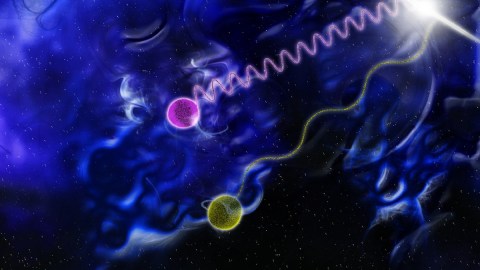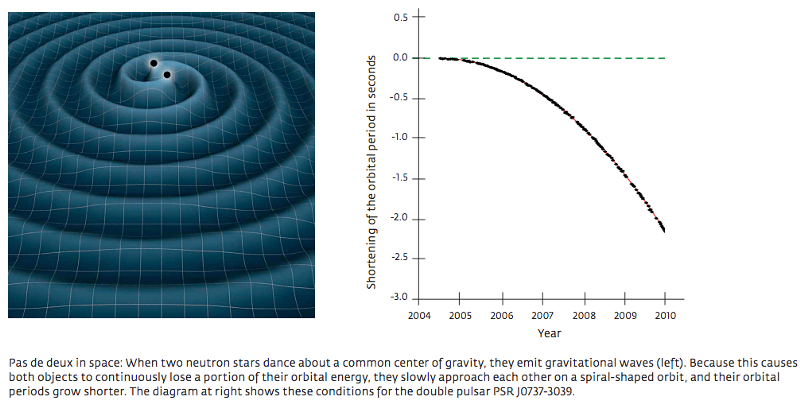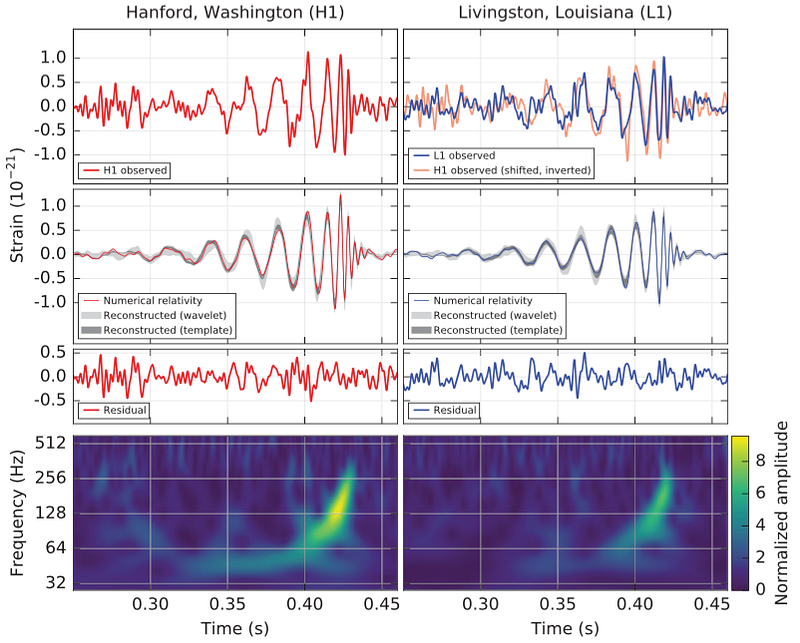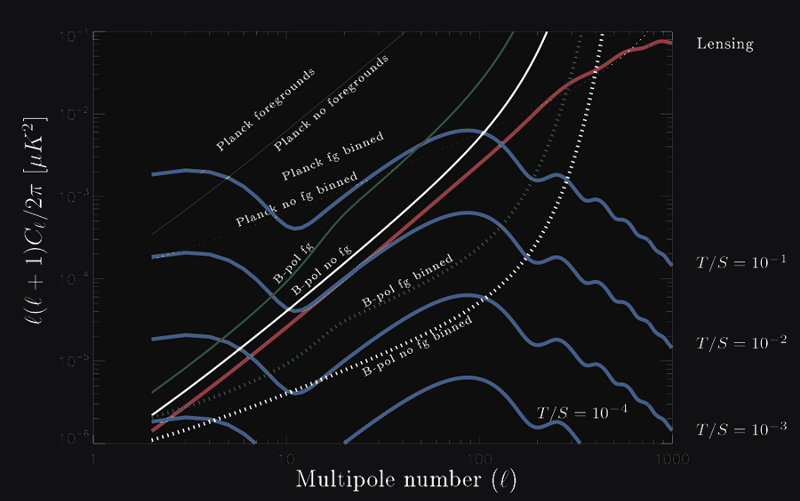Gravitational waves will show the quantum nature of reality

LIGO was just the beginning of this new field of science, but a different experiment will lead the quantum breakthrough!
“If you are not completely confused by quantum mechanics, you do not understand it.” –John Wheeler
One of the oldest predictions of Einstein’s general theory of relativity — the gravitational theory that spacetime is a fabric that gets bent and curved by the presence of matter and energy — is that masses that accelerate in the Universe produce ripples in the fabric of space itself: gravitational waves. But Einstein’s conception of gravity is still a classical picture, as:
- space and time are continuous entities, not discrete ones,
- the predictions of the theory break down (give nonsense answers) at very small distances and in the presence of very large fields,
- and there’s no way to calculate the gravitational field for inherently quantum systems, like an electron confronted with a double slit.
We fully expect that at some level, gravity will turn out to be quantum in nature, although we don’t yet have any experimental evidence of that. But with LIGO’s recent direct detection of gravitational waves, we have every reason to believe that the existence of these waves hold the key to showing — for the first time — that gravity truly is a force that’s quantum in nature. Here’s how we’ll do it.
https://www.youtube.com/watch?v=IZhNWh_lFuI
Any mass that accelerates in the presence of a gravitational field should produce gravitational waves, which are a form of energy that travels through space at the speed of light. It took sixty years for the first indirect evidence for the existence of gravitational waves to emerge, since it requires incredibly strong gravitational fields — very large masses accelerating at very short separation distances from one another — to produce appreciable changes in an astrophysical object’s behavior. But the smallest, highest-mass, most compact objects are black holes and neutron stars, and they’re notoriously difficult to observe since they emit virtually no light!
Thankfully, one class of neutron star — a pulsar — actually is visible thanks to the radio waves it emits from its poles as it rotates. These are normally some of the most perfect clocks in the Universe, but if one happens to be in orbit around another collapsed object (either a neutron star or black hole), its orbit will decay, as energy is carried off in gravitational waves.

This indirect detection of gravitational waves was first made in the 1970s and 1980s, and the orbital decay matched the predictions of general relativity precisely. But it was last month’s announcement by LIGO that truly, unambiguously confirmed this relativistic phenomenon. As two black holes merged together some 1.3 billion light years away, a whopping three solar masses worth of matter was converted into the energy of gravitational waves. Traveling across the Universe at the speed of light, they arrived at the twin LIGO detectors in Washington and Louisiana, alternately compressing and stretching the lasers’ path by less than a hundredth of a proton. The direct detection of these signals tell us, unambiguously, that gravitational waves do, in fact, ripple through out Universe.

In a quantum version of this gravitational theory, gravitational waves would actually be made out of a plethora of quantum particles — gravitons — just like the light we see is made up of quantum particles in the form of photons. While we do not yet know how to detect graviton particles directly, there’s another place and time that gravitational waves are produced where the origin is entirely quantum in nature: from the epoch of the Universe known as cosmic inflation, the period of time just prior to the Hot Big Bang. As space expands exponentially, quantum fluctuations in all the fields of the Universe are stretched across the cosmos, including fluctuations in the gravitational field. While some of these fluctuations (scalar fluctuations) lead to overdense and underdense regions of space, which grow into galaxies, groups and clusters over time, another class of fluctuations (tensor fluctuations) lead to the production of gravitational waves themselves.

These fluctuations interact with the photons in the Universe in a very particular way, polarizing their light in a fashion that’s detectable in principle. In fact, if the gravitational waves from inflation are above a certain magnitude, this polarization signal will be detectable in the leftover glow from the Big Bang — the Cosmic Microwave Background — at some point during the next 20 years or so.

The BICEP2 collaboration prematurely claimed to detect these waves a couple of years ago, a claim that was overturned by subsequent, improved evidence. But there are a whole slew of current and future experiments that should be up to 100 times more sensitive than BICEP2 was. If they turn up a positive signal for these gravitational waves from inflation, this would be very different than the gravitational waves that LIGO saw, since these gravitational waves are quantum in origin; they cannot be generated via classical general relativity alone. This is what experiments such as BICEP2, POLARBEAR, SPTPOL and SPIDER, among others, are working to measure right now.

This prediction may fail, if inflation is of a variety that produces gravitational waves that are too small in magnitude. But it may succeed, too, and if it does, it will be the ultimate gravitational wave signal: one that’s inherently quantum in origin, and one that proves that gravity is a quantum theory after all. While we all hope that a truly quantum, more fundamental theory of gravitation is found, finding evidence that gravity actually is a fundamentally quantum force would be a huge leap all on its own. LIGO won’t be the piece of equipment that gets us there, but the phenomenon that it’s just shown us is real — gravitational waves — might very well be the missing puzzle piece that allows it all to come together!
This post first appeared at Forbes. Leave your comments on our forum, check out our first book: Beyond The Galaxy, and support our Patreon campaign!





